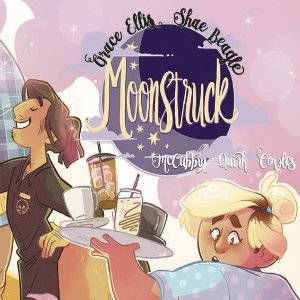
Interview with MOONSTRUCK Creators, Grace Ellis & Shae Beagle
As a scrappy, loud-mouthed advocate for diversity in comics, it should be easy for me to tell you exactly why we need it, beyond “because we need it.”
It ain’t. Big words disappear on me the minute I reach for them. I disappear the minute I can’t find big words. But maybe that’s reason enough. After all, If we never see our own reflection, how do we know we haven’t already disappeared?
From the moment Burt Ward’s puns started drifting out from late night TV Land reruns of ’60s Batman and lulling me to sleep, I’ve always wanted to be Robin. He was smart. He was brave. He knew how to pretend to climb a wall while remaining horizontal. Most of all, when I felt doomed, he was full of hope. Dick Grayson was my first and favorite Robin and while I see a little more of myself in Jason Todd, I don’t look like either of them. I would have probably outgrown their tighty greenies by the time I was 9.
Representation matters because one of the kindest things anyone did for me as an adult was give me a goofy Batman pop-up book whose final page was just a picture of Robin, with a mirror where his face should be. Attached to the page was a piece of paper that said “It’s you!”.
Most marginalized readers don’t get that sort of welcome. Comics are an insular space. Most of your heroes are white and male, cis-gendered and straight. They represent you symbolically sometimes (Hey, most of the X-Men) or they exist as kind of sexy young counterparts of those straight white male characters built for straight white male audiences (Hey, most of my favorite female sidekicks).
In Bill Adler’s Funniest Fan Letters to Batman, there’s a piece of a letter from a kid named Stephanie G. that girls who loved comics like I did use as a mantra:
“I look a lot like Robin if you close your eyes.”
That’s the wonderful thing about Moonstruck and the magical characters within. You don’t have to close your eyes. Open to any one page and you could see a character that looks like you, or a friend of yours. Plus or minus some fangs or bat wings or a centaur butts. Shae Beagle, making their comic book debut, turns nearly every page into a Where’s Waldo? spread of fun characters in different shapes, sizes, skin tone, and even species. Grace Ellis, known for her work on Lumberjanes and Bravest Warriors brings them to life in a refreshingly grounded way. These characters look like us, and they have problems like us. For the most part.
I mean, they’re magic. Non-metaphorically. But also metaphorically.
I had a chance to ask these two brilliant human beings a little about Moonstruck and themselves. Catch the interview below: (SPOILER: CATPUCCINO.)
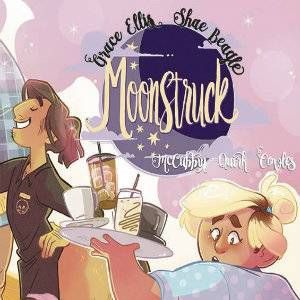 I’ve only read one issue and caught myself having feelings about how wonderful it was to see such a diverse cast on the page. I was an adult by the time I saw someone close to myself in comics (Renee Montoya). Were there any characters that really clicked for each of you personally that influence your work?
I’ve only read one issue and caught myself having feelings about how wonderful it was to see such a diverse cast on the page. I was an adult by the time I saw someone close to myself in comics (Renee Montoya). Were there any characters that really clicked for each of you personally that influence your work?
GE: Oh god, I love Renee Montoya a lot. Ok, this is kind of a deep cut, but for a long time, I used to tell people that the closest I ever came to really seeing myself in a character was Edie, the gregarious secondary-character best friend in the movie Imagine Me and You, which is bizarre because I don’t usually think of myself as the gregarious type. BUT I think what I was trying to get at was that Edie is a character whose story isn’t tragic, whose sexuality isn’t fraught, who’s there for her friend and has other things going on for herself besides just being a lesbian, and that’s something I can identify with. And that’s the type of character I’m hoping we’ve created with Moonstruck.
SB: I thought about this for a while, and I don’t think I’ve really found any character that’s clicked with me yet, in comics at least. I draw influence from a lot of places, but it’s hard to pin it down to one. Maybe someday!
Despite taking place in an incredibly magical universe, Moonstruck seems to be really grounded in the personal. Is that a difficult balance to maintain?
GE: Yes and no. Part of good storytelling, in my opinion, is finding a way to make the plot of the story extremely particular to the world of the story, telling the story in such a way that you can’t imagine it taking place in any other universe (or any other form, but that’s another conversation). So part of Moonstruck is about identity and the concept of “the other,” and a way we dig into those themes is through – this is so hard to describe without spoiling it – a series of events that could only exist in the world of Moonstruck.
SB: I think the balance comes pretty easily! Something about drawing so many mythical creatures doing mundane little things like grabbing a coffee or walking their dog is weirdly natural. I guess with magic being so commonplace in the Moonstruck world, it makes the personal that much more interesting!
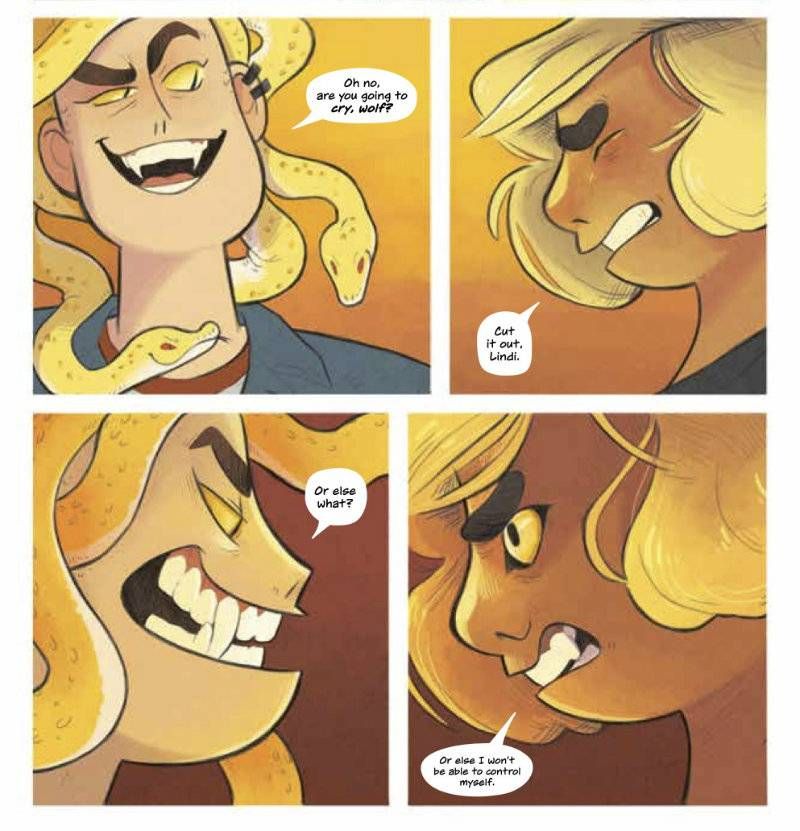
What’s the thing you hope readers take away from Moonstruck the most?
GE: Well, a couple things, no, three things: Number one, I hope that it’s fun to read and that people enjoy stepping into a world that’s similar but different from ours. Number two, I hope that Moonstruck contributes to the LGBTQ story canon in a responsible and new way, which is to say that I hope readers take away the idea that queer people can be the protagonist and that our stories can be about more than just coming out. And number three, I hope that Moonstruck readers leave feeling like comic books can be about more than punching, like, they can have real themes and complicated characters.
There’s a really cute nod to a popular middle-grade series that I hope we get to see some more of in this comic. What were your favorite books growing up?
GE: I was big into the Baby-Sitters Club, obviously. I’m totally blanking, I feel like I’ve never read a book in my life. Anything that was about a girl the author described as a “tomboy,” I was all over it.
SB: I wasn’t much of a reader growing up, but I got very into the Warriors series by Erin Hunter (mine is family of cat people), and the Pit Dragon Chronicles by Jane Yolen.
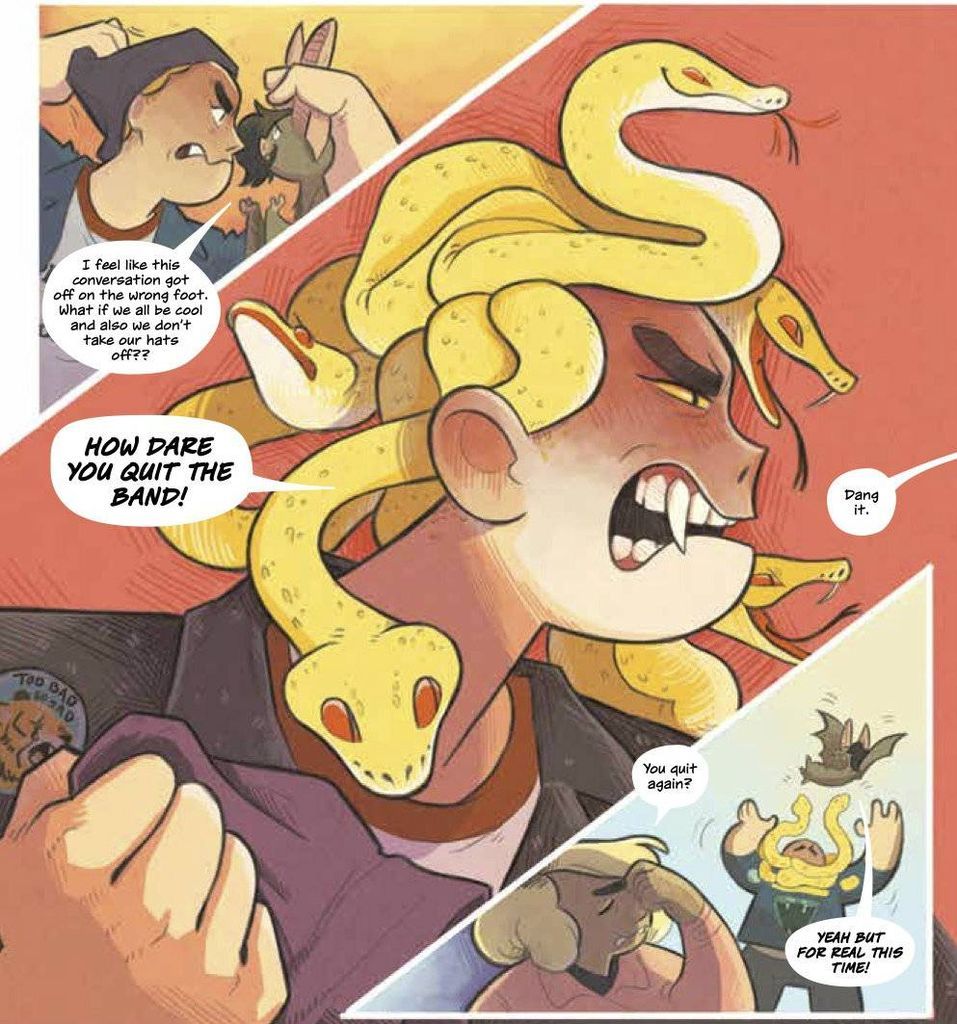
One of my favorite things to do while reading Moonstruck #1 was to look at all of the amazing background characters. Shae, if it’s not too spoilery, who was your favorite character to design?
SB: (Thank you so much, firstly!) I have a blast designing all the background characters, and I’m always pulling from all kinds of myths and legends (sometimes I think I put most of my research energy into one-off characters, haha), but I really had the most fun designing our “frat faeries” who pop up every so often.
What’s the most recent thing you’ve read?
GE: I just finished God of Vengeance by Sholem Asch. It’s pretty remarkable, I recommend it. Now I’m re-reading Sarah Ruhl’s In The Next Room (or The Vibrator Play). I read a lot of plays, which I also recommend.
SB: Most recently I’ve been reading Snotgirl by Brian Lee O’Malley and Leslie Hung, which I’m pumped to finally start in on!
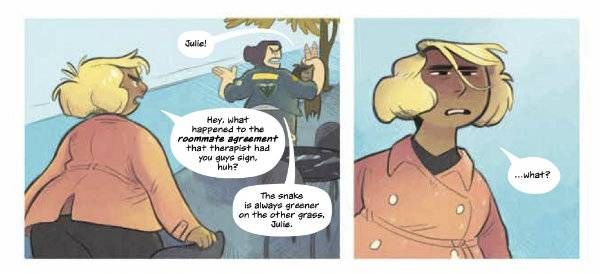
Grace, you’ve already got a few amazing comics under your belt. Are there character personality types that are easier to write for you, or that you find yourself gravitating towards?
GE: Haha oh man, thank you. I think the easiest characters to write are the really energetic ones, the ones who talk too much, because it means I can just be silly, like Ripley in Lumberjanes or Chet in Moonstruck. Someone in another interview pointed out that I keep writing characters that can transform (the bear woman in Lumberjanes, the werewolves in Moonstruck), but I couldn’t tell you what that says about me, psychologically. That’s for me and my therapist to figure out, I guess.
If you could have any kind of magic power, what would it be?
GE: The power to stop time is the ultimate super power, and I won’t hear any argument against it. Besides that, I think I would want to be able to hear any song once and immediately be able to play a perfect, intricate arrangement of it on any instrument. It’s a cool power because there’s no moral responsibility involved!
SB: I’d really love to shapeshift, I just want to be so many things!
Would you have the heart to drink a catpuccino in real life?
GE: WE ACTUALLY DID THIS TOGETHER! Shae and I were in Seattle for Emerald City Comic Con, and we had some free time, so we went to a cat café called the Seattle Mewtropolitan, and all their drinks were cat-themed with little cat faces on them! We didn’t even plan it. I was so excited. I’m excited right now just thinking about it.
We are totally heartless, is what I’m saying.
SB: Fun story with this one! Grace and I actually went to a little cat café while we were in Seattle for ECCC, and we drank some VERY adorable little catpuccinos (but not before saving a couple pics, we’re not that heartless).
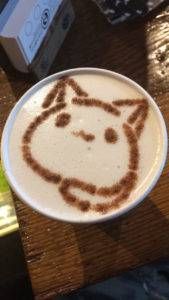

What’s something you wish you could tell the you of 5 years ago?
GE: Oh man, I was going through a lot of stuff five years ago. I think I would tell myself that it’s ok to not finish college and that I should start seriously writing a little bit every day. I know there are a lot of good arguments that dismantle the concept of “you have to write every day to be a writer,” and I don’t completely disagree, but I do think it takes a certain amount of discipline, and you do have to exercise your writing muscles in order to get better. So even if you decide to write one paragraph every day, you’ll be one paragraph better at writing than you were when you woke up. If I had written at least one paragraph every day for the last five years, I would be a better writer than I am now, probably.
SB: To young(er) me, I’d say that drawing is something worth sticking with. It’s gonna seem like all these people are out getting “real jobs”, but why is making art any less real than everything else? Yeah you may not now exactly where you’re going all the time (at all actually), but hard work always pays off. You’ll figure it out! Just keep creating!
Finally, what are some words you have for someone just getting into comics?
GE: Comics is a medium, not a genre. If you aren’t finding the kinds of stories you like in mainstream books, don’t give up, because there are some wildly talented people making indie comics you might like.
SB: Getting into comics seems kinda daunting when you didn’t get it growing up, but if you find the right people it can be a super welcoming community. It’s never too late to get into something. If you’re into it, be into it!










